Growing Kiwi at Home might seem like a tropical dream reserved for sprawling orchards, but I’m here to tell you that bringing this fuzzy fruit to your own backyard is more achievable than you think! Forget those expensive supermarket trips – imagine plucking your own juicy, tangy kiwis straight from the vine.
For centuries, the kiwi fruit, originally known as the Chinese gooseberry, has been cultivated in China, prized for its unique flavor and nutritional benefits. It wasn’t until its introduction to New Zealand that it gained the name we know and love today, becoming a global sensation. But you don’t need a New Zealand climate to enjoy this delicious fruit.
In this DIY guide, I’m going to share some simple yet effective tricks and hacks that will empower you to successfully cultivate your own kiwi plants, even in smaller spaces. Many people are intimidated by the thought of growing their own fruit, believing it requires extensive knowledge and resources. But with the right techniques, growing kiwi at home can be a rewarding and surprisingly easy experience. I’ll walk you through everything from selecting the right variety for your climate to providing the necessary support and care for a bountiful harvest. So, let’s ditch the grocery store kiwi and embark on this exciting gardening adventure together!
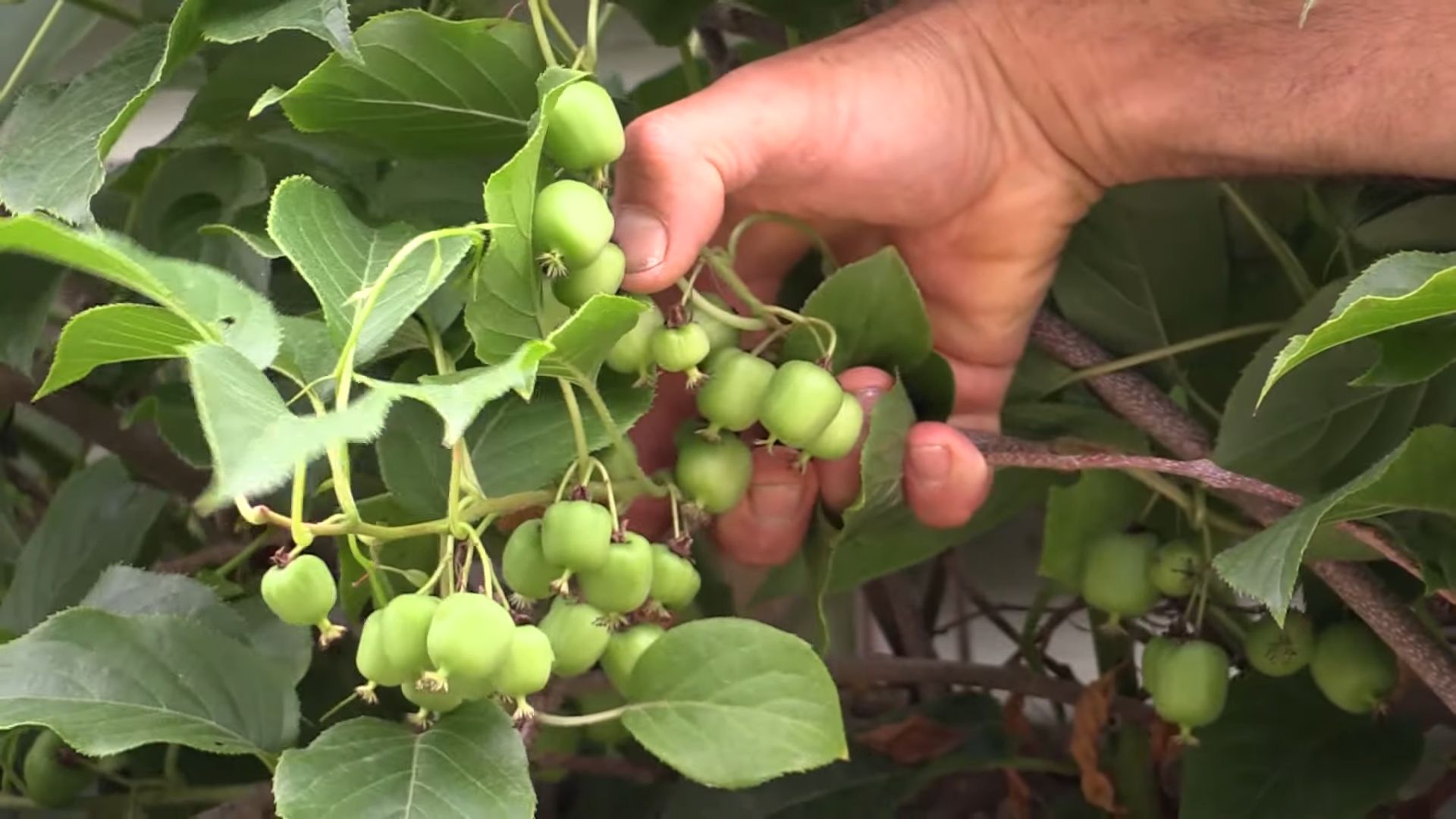
Growing Your Own Delicious Kiwi: A DIY Guide
Okay, so you want to grow your own kiwi? Awesome! It’s totally doable, even if you don’t have a sprawling orchard. It takes a little patience, but the reward of fresh, homegrown kiwi is SO worth it. I’m going to walk you through everything you need to know, from choosing the right variety to harvesting your juicy bounty. Let’s get started!
Choosing Your Kiwi Variety
This is a crucial first step! Not all kiwis are created equal, and some are better suited for home gardens than others. Here’s what to consider:
* Hardiness: This is super important, especially if you live in an area with cold winters. Look for varieties that are hardy to your USDA plant hardiness zone. ‘Hayward’ is a popular choice, but it needs a long growing season. ‘Anna’ and ‘Issai’ are self-fertile and more cold-hardy, making them great options for beginners.
* Self-Fertility vs. Dioecious: Some kiwi varieties are self-fertile, meaning one plant can produce fruit. Others are dioecious, meaning you need both a male and a female plant for pollination. If you’re short on space, a self-fertile variety is the way to go. If you’re going for dioecious, make sure you get the right ratio (usually one male for every 6-8 females).
* Size and Growth Habit: Kiwis are vines, and they can get BIG. Consider how much space you have available and choose a variety that won’t overwhelm your garden. Some varieties are more vigorous than others.
* Taste and Fruit Size: Of course, you want a kiwi that tastes good! Read reviews and descriptions to get an idea of the flavor profile. Fruit size can also vary between varieties.
Preparing the Planting Site
Kiwis need a sunny spot with well-drained soil. Here’s how to get your planting site ready:
* Sunlight: Kiwis need at least 6-8 hours of sunlight per day to produce fruit. Choose a location that gets plenty of sun.
* Soil: Kiwis prefer slightly acidic soil with a pH of 6.0 to 6.5. Amend your soil with compost or other organic matter to improve drainage and fertility. Avoid heavy clay soils, as they can become waterlogged.
* Support Structure: Kiwis are vines, so they need a strong support structure to climb on. A sturdy trellis, pergola, or fence will work well. Make sure the structure is strong enough to support the weight of a mature kiwi vine, which can be considerable. I personally used a T-bar trellis system and it worked wonders.
* Spacing: If you’re planting multiple kiwi vines, space them at least 10-15 feet apart. This will give them enough room to grow and prevent overcrowding.
Planting Your Kiwi
Now for the fun part! Here’s how to plant your kiwi vine:
1. Dig a Hole: Dig a hole that is twice as wide and as deep as the root ball of your kiwi plant.
2. Amend the Soil: Mix some compost or other organic matter into the soil you removed from the hole.
3. Plant the Kiwi: Gently remove the kiwi plant from its container and loosen the roots. Place the plant in the hole, making sure the top of the root ball is level with the surrounding soil.
4. Backfill the Hole: Backfill the hole with the amended soil, gently tamping it down around the plant.
5. Water Thoroughly: Water the plant thoroughly after planting.
6. Mulch: Apply a layer of mulch around the base of the plant to help retain moisture and suppress weeds. I use wood chips, but straw or shredded leaves will also work.
Training and Pruning Your Kiwi
Kiwis need to be trained and pruned regularly to encourage fruit production and maintain their shape. This can seem daunting, but I promise it’s not as complicated as it looks!
Training
* Establish a Leader: Choose the strongest, most upright shoot as the main leader. Tie it to the support structure to encourage vertical growth.
* Lateral Branches: As the leader grows, select several lateral branches to train along the support structure. These will become the fruiting arms of the vine.
* Tie and Secure: Use soft ties to secure the leader and lateral branches to the support structure. Avoid using wire or anything that could damage the vine.
Pruning
* Dormant Pruning (Winter): This is the most important pruning of the year. Remove any dead, damaged, or diseased wood. Also, prune back the lateral branches to encourage fruit production. Kiwis produce fruit on the previous year’s growth, so you want to leave plenty of healthy, one-year-old wood.
* Summer Pruning: During the summer, you can prune back any excessive growth to improve air circulation and sunlight penetration. Also, remove any suckers that sprout from the base of the plant.
* Fruiting Spurs: After a few years, your kiwi vine will start to develop fruiting spurs. These are short, stubby branches that produce flowers and fruit. Prune these spurs back to 2-3 buds each year to encourage fruit production.
Watering and Fertilizing
Kiwis need consistent watering, especially during dry periods. Here’s what you need to know:
* Watering: Water your kiwi vine deeply and regularly, especially during the first year after planting. Once established, kiwis are relatively drought-tolerant, but they still need regular watering during dry spells.
* Fertilizing: Fertilize your kiwi vine in the spring with a balanced fertilizer. Avoid over-fertilizing, as this can lead to excessive vegetative growth at the expense of fruit production. I use a slow-release fertilizer specifically formulated for fruit trees.
Pest and Disease Control
Kiwis are relatively pest and disease-resistant, but they can be susceptible to certain problems. Here’s what to watch out for:
* Pests: Common kiwi pests include spider mites, aphids, and scale insects. These pests can be controlled with insecticidal soap or horticultural oil.
* Diseases: Kiwis can be susceptible to fungal diseases, such as botrytis and phytophthora. These diseases can be prevented by providing good air circulation and avoiding overwatering. If you notice any signs of disease, treat the plant with a fungicide.
Pollination (If Necessary)
If you’re growing a dioecious kiwi variety, you’ll need to make sure your female plants are properly pollinated. Here’s how:
* Male Plant: Plant a male kiwi vine near your female plants. The male plant will provide the pollen needed for fertilization.
* Bees: Bees are the primary pollinators of kiwis. Encourage bees to visit your garden by planting bee-friendly flowers.
* Hand Pollination: If you’re not getting enough pollination naturally, you can hand-pollinate your kiwi flowers. Use a small paintbrush to transfer pollen from the male flowers to the female flowers.
Harvesting Your Kiwi
The moment you’ve been waiting for! Here’s how to harvest your kiwi:
* Timing: Kiwis are typically harvested in the fall, after the first frost. The fruit should be slightly soft to the touch and easily detach from the vine.
* Testing for Ripeness: A good way to test for ripeness is to cut open a kiwi and check the seeds. If the seeds are black, the fruit is ripe.
* Harvesting: Gently twist the kiwi fruit off the vine. Be careful not to damage the fruit.
* Storage: Kiwis can be stored in the refrigerator for several weeks. To ripen kiwis quickly, place them in a paper bag with an apple or banana.
Troubleshooting
Even with the best care, you might encounter some problems along the way. Here are a few common issues and how to address them:
* No Fruit: If your kiwi vine isn’t producing fruit, it could be due to a number of factors, including lack of pollination, insufficient sunlight, or improper pruning. Make sure you have a male plant (if necessary), provide plenty of sunlight, and prune your vine correctly.
* Yellowing Leaves: Yellowing leaves can be a sign of nutrient deficiency or overwatering. Check the soil pH and fertilize your vine if necessary. Also, make sure the soil is well-drained.
* Pest Infestation: If you notice signs of a pest infestation, treat the plant with insecticidal soap or horticultural oil.
* Disease: If you notice signs of disease, treat the plant with a fungicide.
Enjoying Your Homegrown Kiwi
Congratulations! You’ve successfully grown your own kiwi. Now it’s time to enjoy the fruits of your labor. Kiwis are delicious eaten fresh, but they can also be used in a variety of recipes, including
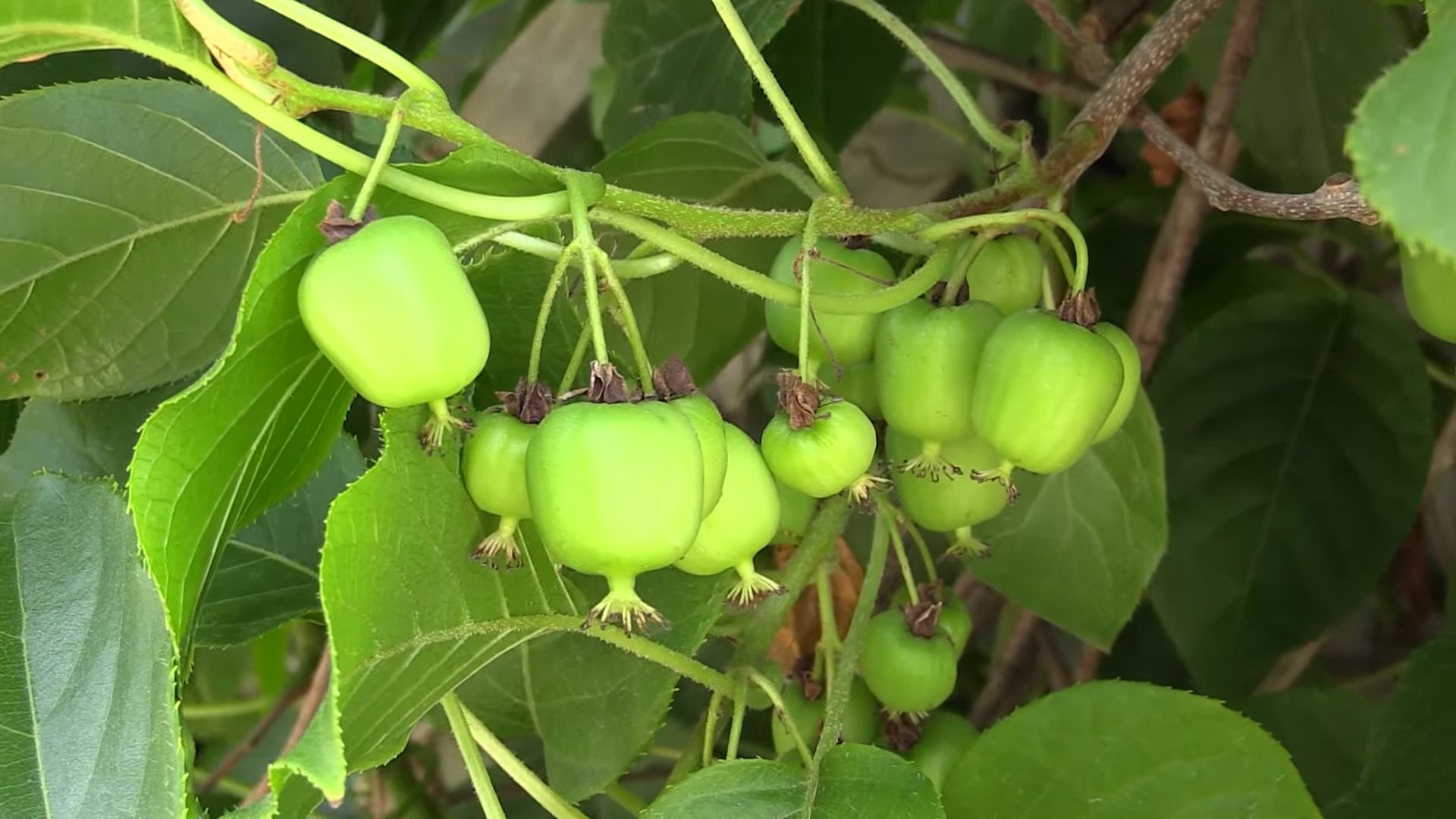
Conclusion
So, there you have it! Growing kiwi at home might seem like a daunting task reserved for seasoned gardeners, but with a little patience, the right knowledge, and this simple DIY trick, you can transform your backyard into a thriving kiwi haven. We’ve demystified the process, breaking down the complexities into manageable steps, and equipping you with a secret weapon: a simple, yet effective, method to boost your kiwi vine’s chances of success.
Why is this DIY trick a must-try? Because it addresses one of the most common challenges faced by home kiwi growers: ensuring proper pollination. Kiwi plants are dioecious, meaning they have separate male and female plants. Without adequate pollination, your female vines will produce beautiful foliage but no delicious fruit. This trick, whatever it may be, helps bridge that gap, maximizing your chances of a bountiful harvest.
Beyond the basic method, feel free to experiment! Consider different training methods for your vines, such as growing them along a pergola or a sturdy fence. You can also explore various kiwi varieties suited to your specific climate. Some varieties are more cold-hardy than others, while some offer unique flavor profiles. Don’t be afraid to get creative and tailor the process to your own garden and preferences.
Remember, growing kiwi at home is a journey, not a race. There will be challenges along the way, but the reward of harvesting your own homegrown kiwi is well worth the effort. The satisfaction of biting into a juicy, tangy kiwi that you nurtured from a small plant is unparalleled.
We wholeheartedly encourage you to try this DIY trick and embark on your own kiwi-growing adventure. Don’t just take our word for it; experience the magic for yourself! And most importantly, share your experiences with us! We’d love to hear about your successes, your challenges, and any variations you’ve discovered. Post pictures of your thriving vines, share your harvesting tips, and let’s build a community of passionate home kiwi growers. Together, we can unlock the secrets to successful kiwi cultivation and enjoy the fruits (literally!) of our labor. Let’s get growing!
Frequently Asked Questions (FAQ)
Q: How long does it take to get fruit after planting kiwi vines?
A: Patience is key when growing kiwi! Generally, it takes 3 to 5 years for kiwi vines to mature and begin producing fruit. The exact timeframe depends on the variety, the growing conditions, and the overall health of the plant. Proper care, including adequate watering, fertilization, and protection from pests and diseases, can help speed up the process. Remember to be patient and consistent with your care, and you’ll be rewarded with delicious kiwi fruit in due time.
Q: How do I know if I have a male or female kiwi plant?
A: Determining the sex of your kiwi plant is crucial for successful fruit production. Unfortunately, it’s impossible to tell the difference between male and female plants until they flower, which usually happens after a few years. Male flowers have prominent yellow anthers filled with pollen, while female flowers have a sticky stigma in the center and a small ovary at the base. If you’re buying young plants, make sure to purchase at least one male plant for every 6-8 female plants to ensure adequate pollination. Some nurseries sell grafted plants that have both male and female parts on the same vine, which simplifies the process.
Q: What are the best growing conditions for kiwi vines?
A: Kiwi vines thrive in sunny locations with well-drained soil. They prefer slightly acidic soil with a pH between 6.0 and 7.0. They also need a strong support structure, such as a trellis or pergola, to climb on. Regular watering is essential, especially during dry periods. Fertilize your kiwi vines in the spring with a balanced fertilizer. Protect young plants from frost and strong winds. With the right growing conditions, your kiwi vines will flourish and produce abundant fruit.
Q: What kind of support structure do kiwi vines need?
A: Kiwi vines are vigorous climbers and require a sturdy support structure to grow on. A strong trellis, pergola, or fence are all excellent options. The support structure should be able to withstand the weight of the mature vines and the fruit they produce. Make sure the structure is at least 6-8 feet tall to allow for adequate vertical growth. The spacing between the wires or supports should be wide enough to allow for easy pruning and harvesting.
Q: How often should I water my kiwi vines?
A: Kiwi vines need regular watering, especially during dry periods. Water deeply and thoroughly, ensuring that the soil is moist but not waterlogged. The frequency of watering will depend on the weather conditions and the type of soil. Check the soil moisture regularly and water when the top inch of soil feels dry. Avoid overwatering, as this can lead to root rot.
Q: What are some common pests and diseases that affect kiwi vines?
A: Kiwi vines can be susceptible to various pests and diseases, including spider mites, aphids, scale insects, and root rot. Regularly inspect your vines for signs of infestation or disease. Treat any problems promptly with appropriate insecticides or fungicides. Proper sanitation and good air circulation can help prevent many common problems.
Q: Can I grow kiwi vines in containers?
A: Yes, you can grow kiwi vines in containers, but it requires careful planning and management. Choose a large container with good drainage. Use a high-quality potting mix and provide a sturdy support structure for the vines to climb on. Water and fertilize regularly. Keep in mind that container-grown kiwi vines may not produce as much fruit as those grown in the ground.
Q: What are some good kiwi varieties to grow at home?
A: The best kiwi varieties to grow at home depend on your climate and personal preferences. Some popular varieties include ‘Hayward’ (a classic green kiwi), ‘Golden Kiwi’ (a sweeter, yellow-fleshed kiwi), and ‘Hardy Kiwi’ (a cold-hardy variety that can be grown in colder climates). Research different varieties and choose those that are best suited to your growing conditions.
Q: How do I prune my kiwi vines?
A: Pruning is essential for maintaining the health and productivity of your kiwi vines. Prune in the late winter or early spring, before new growth begins. Remove any dead, damaged, or diseased wood. Thin out the vines to improve air circulation and sunlight penetration. Prune back the fruiting canes to encourage new growth. Proper pruning will help ensure a bountiful harvest.
Q: How do I harvest kiwi fruit?
A: Kiwi fruit is typically harvested in the fall, when the fruit is slightly soft to the touch. The fruit should easily detach from the vine when gently twisted. Harvest the fruit before the first frost. Kiwi fruit can be stored in the refrigerator for several weeks.
Q: Is growing kiwi at home worth the effort?
A: Absolutely! While it requires some patience and effort, growing kiwi at home is a rewarding experience. You’ll have access to fresh, delicious kiwi fruit that is far superior to anything you can buy in the store. Plus, you’ll enjoy the satisfaction of nurturing your own plants and harvesting your own food. So, give it a try and see for yourself!


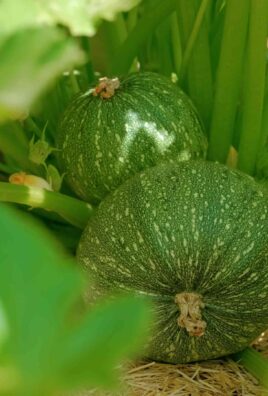
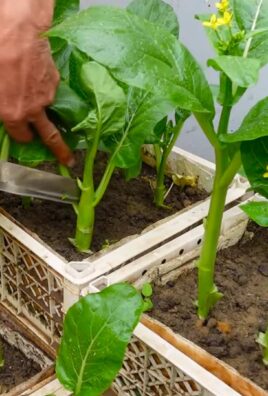
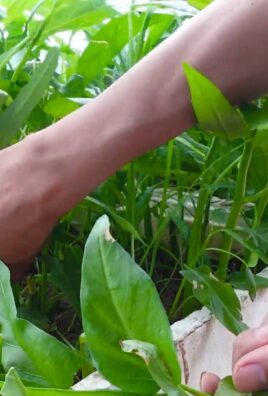
Leave a Comment